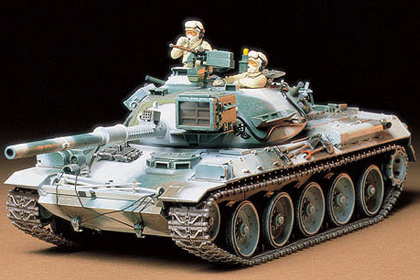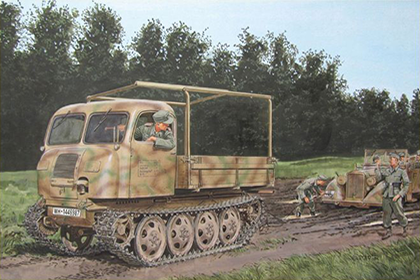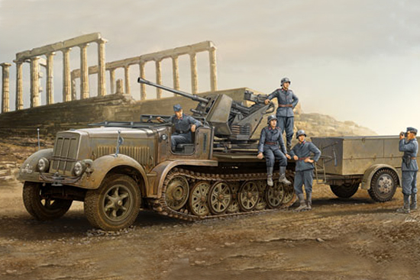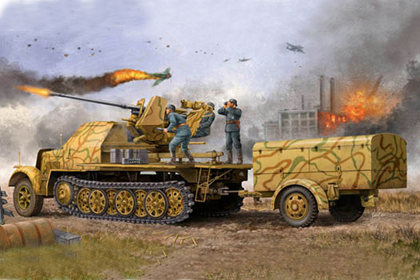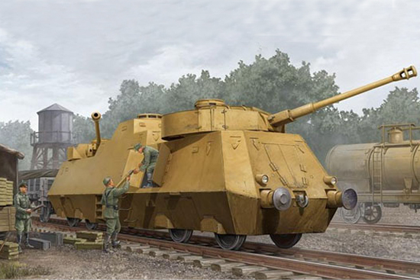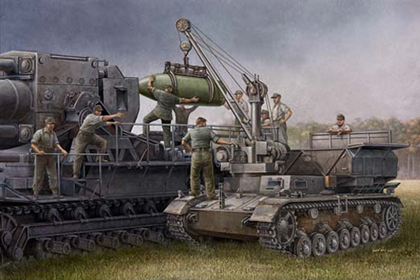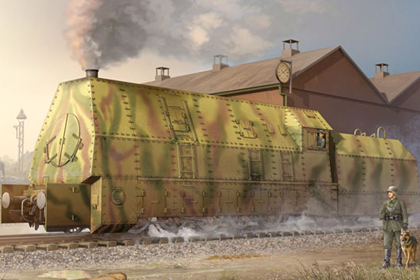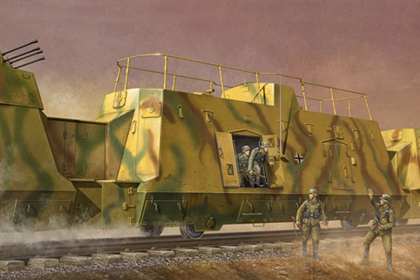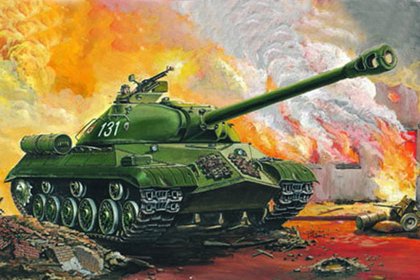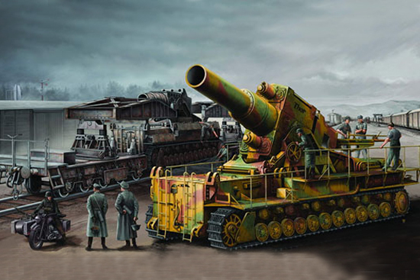This is the Tamiya 35 208 kit in 1/35 scale, of the ‘JGSDF Type 90 Tank’.
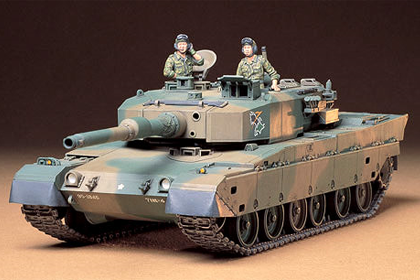
History
The Type 90 tank is the current main battle tank (MBT) of the Japan Ground Self-Defense Force (JGSDF). It is built by Mitsubishi Heavy Industries and was designed as a replacement for all deployed Type 61s and a portion of their Type 74 tanks, and entered service in 1990. It is slated to be complemented by the Type 10.
The Type 90 mounts a licensed copy of the German Rheinmetall L44 120mm smoothbore cannon product by Japan Steel Works Limited. This is the same gun that is mounted on the German Leopard 2, American Abrams, and the South Korean K1A1 tanks. The gun is armed and loaded through a mechanical bustle autoloader (conveyor-belt type), developed by Mitsubishi of Japan.
The Type 90 tank is the first western tank to achieve manpower savings by reducing the crew to three through the development of the turret bustle autoloader (with the exception of the turretless Strv 103). This design allows the tank crew to operate without a loader, which allows the use of a smaller turret.
